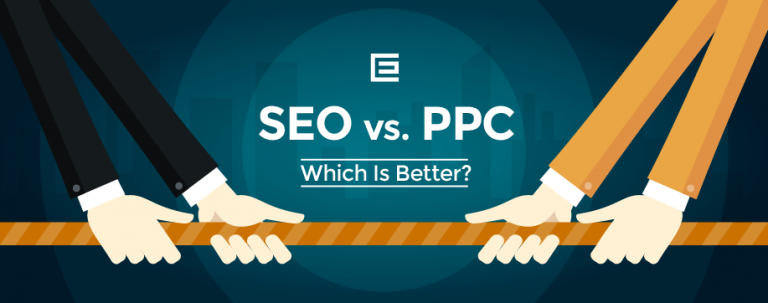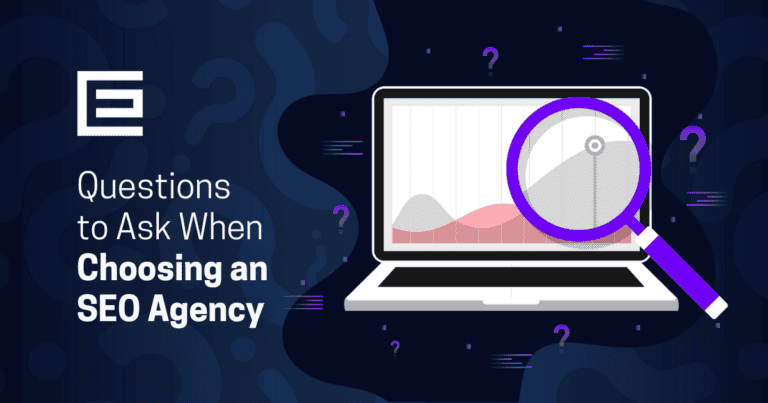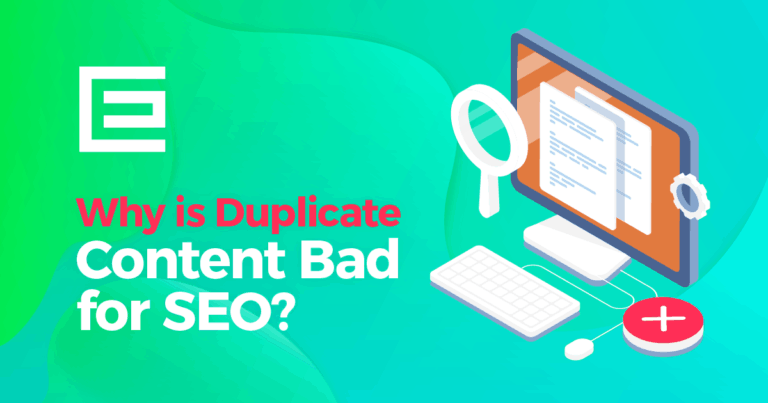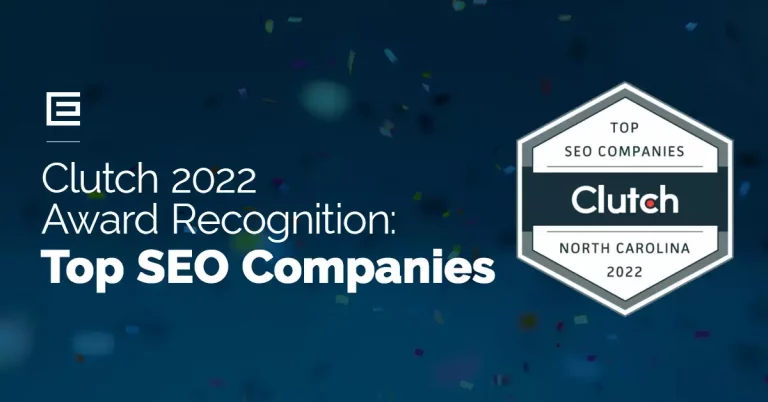Search Engine Optimization (SEO) and Search Engine Marketing (SEM) are two strategies used in digital marketing. SEO is a technique focused on optimizing a website to improve its visibility in organic search engine results. This involves tailoring website content, structure, and on-page elements like meta-tags, to align with search engine algorithms. The primary goal is to enhance the site’s rank for specific keywords, thus increasing organic traffic.
On the other hand, SEM is a broader term that includes SEO but also encompasses paid search strategies. SEM involves purchasing ads on search engines to increase a website’s visibility. These paid search campaigns are typically conducted through platforms like Google Ads, where advertisers bid on keywords to have their ads appear in the sponsored section of search results.
So, SEO vs. SEM – which one should you focus on to help your business thrive?
Understanding SEO (Search Engine Optimization)
Definition of SEO
Search Engine Optimization (SEO) focuses on enhancing a website’s visibility in organic search engine results. It’s a multifaceted strategy aimed at increasing the quantity and quality of traffic to a website through organic search engine results. Unlike paid advertising, SEO involves optimizing a website to rank higher in search engine results pages (SERPs) without paying for placement.
How SEO Works
SEO works by aligning a website’s content and structure with the algorithms used by search engines like Google to rank web pages. These algorithms consider various factors to determine the relevance and authority of a website for specific search queries. The goal of SEO is to signal to search engines that a website is a valuable resource for users searching for information related to the website’s content. By doing so, the website can achieve higher rankings in SERPs, leading to increased visibility and organic traffic.
Key Components of SEO
SEO is a complex process that involves various components working together to improve a website’s search engine rankings. These components can be broadly categorized into on-page SEO, off-page SEO, and technical SEO.
On-page SEO (Content, Keywords, HTML tags)
On-page SEO refers to the optimization of elements within a website that influence its ranking in search results. This includes:
- Content: Creating high-quality, relevant, and informative content that meets the needs of your target audience. Content should be engaging, original, and provide value to readers.
- Keywords: Identifying and incorporating relevant keywords that users are likely to use when searching for the products, services, or information offered by the website.
- HTML tags: Optimizing HTML tags like title tags, meta descriptions, and header tags to include target keywords. These tags help search engines understand the content and context of web pages.
Off-page SEO (Backlinks, Social Media)
Off-page SEO involves activities outside of the website to improve its position in search rankings. Key elements include:
- Backlinks: Building high-quality backlinks from reputable and relevant websites. Backlinks are a crucial factor in how search engines assess the credibility and authority of a site.
- Social Media: Leveraging social media platforms to increase the visibility and reach of content. While social media signals are not a direct ranking factor, they can indirectly influence SEO by driving traffic and enhancing brand recognition.
Technical SEO (Site speed, Mobile-friendliness)
Technical SEO focuses on improving the technical aspects of a website to enhance its ranking in search results. This includes:
- Site Speed: Optimizing website speed to ensure fast loading times. Search engines favor websites that provide a good user experience, and site speed is a significant factor in this.
- Mobile-friendliness: Ensuring the website is optimized for mobile devices. With the increasing use of smartphones for internet access, search engines prioritize websites that are mobile-friendly.
By effectively combining these components, SEO helps websites rank higher in search results, thereby increasing their visibility and organic traffic. This, in turn, can lead to higher engagement, conversions, and ROI for businesses.
Understanding SEM (Search Engine Marketing)
Definition of SEM
Search Engine Marketing (SEM) is a comprehensive digital marketing strategy aimed at increasing a website’s visibility in search engine results pages (SERPs) through both paid and organic tactics. Unlike SEO, which focuses solely on earning traffic through unpaid or free listings, SEM encompasses both paid search strategies (like pay-per-click advertising) and SEO efforts. It’s a powerful approach that enables businesses to gain visibility quickly in search engines, attract targeted traffic, and drive conversions.
Components of SEM
Paid Search Advertising (PPC)
One of the primary components of SEM is Paid Search Advertising, commonly referred to as Pay-Per-Click (PPC) advertising. PPC is a model of internet marketing where advertisers pay a fee each time one of their ads is clicked. Essentially, it’s a way of buying visits to your site, rather than attempting to “earn” those visits organically. Key platforms for PPC include Google Ads and Bing Ads.
- Keyword Research and Selection: Identifying the keywords that potential customers are using to search for products or services like yours.
- Ad Creation: Crafting compelling ad copy that resonates with the target audience and encourages clicks.
- Landing Page Development: Designing landing pages that are optimized for conversion, ensuring a seamless user experience from the ad to the final action.
- Bid Management: Setting and adjusting bids for each keyword or ad placement to stay competitive and maximize return on investment.
Display Advertising
Display advertising is another crucial element of SEM. These are the visual banner ads that you see on advertising-supported sites. Unlike text-based ads, display advertising relies on elements such as images, audio, and video to communicate an advertising message.
- Audience Targeting: Identifying and targeting specific audience segments based on demographics, interests, or behavior.
- Ad Design: Creating visually appealing ads that capture attention and convey the brand message effectively.
- Placement and Optimization: Choosing the right platforms and websites for ad placement and continuously optimizing based on performance metrics.
How SEM Strategies are Implemented
Implementing SEM strategies involves a systematic approach that includes market research, campaign design, execution, and continuous optimization.
- Market Research: Understanding the target audience, their search habits, and preferences.
- Campaign Planning and Setup: Defining campaign goals, budget allocation, and structuring campaigns based on products, services, or audience segments.
- Execution: Launching the campaigns with careful attention to keyword bids, ad placements, and scheduling.
- Monitoring and Optimization: Regularly tracking the performance of campaigns using analytics tools, making adjustments to bids, ad copy, and targeting to improve effectiveness and ROI.
- A/B Testing: Continuously testing different elements of the campaigns, such as ad copy, landing pages, and call-to-actions, to find the most effective combinations.
In summary, SEM is a powerful digital marketing approach that combines the speed and visibility of paid search with the long-term benefits of SEO. By leveraging both paid and organic strategies, businesses can maximize their visibility in search engines, attract more targeted traffic, and drive meaningful conversions.
SEO vs SEM: Key Differences
Understanding the key differences between SEO (Search Engine Optimization) and SEM (Search Engine Marketing) is crucial for any digital marketer or business owner looking to optimize their online presence. While both strategies aim to increase a website’s visibility and traffic through search engines, they differ significantly in their approach, timeframe, cost, and the nature of their benefits.
Traffic Acquisition (Organic vs Paid)
The most fundamental difference between SEO and SEM lies in how they drive traffic to a website.
- SEO (Organic Traffic): SEO focuses on optimizing a website to rank higher in organic search results. This involves creating high-quality content, optimizing keywords, and building backlinks. The traffic generated through SEO is not paid for; it’s earned by creating a website that search engines deem worthy of directing their users to.
- SEM (Paid Traffic): SEM, on the other hand, primarily involves paid advertising, where you pay for each click or impression on your ad. This includes PPC (Pay-Per-Click) campaigns, where advertisers bid on keywords and pay for each click on their advertisements.
Timeframe for Results
The speed at which results are seen from SEO and SEM efforts can vary greatly.
- SEO: SEO is a long-term strategy. Significant improvements in search rankings and organic traffic can take several months to a year, as it takes time for search engines to crawl, index, and rank new content and for changes to a website’s authority to take effect.
- SEM: SEM can yield almost immediate results. Once a campaign is set up and live, ads begin to appear in search results, and traffic can start flowing to your site instantly. This makes SEM an excellent strategy for quick visibility and for testing new markets or products.
Cost Implications
The cost structures of SEO and SEM are distinctly different.
- SEO: While often referred to as “free traffic,” SEO does require investment, primarily in the form of time and resources spent on content creation, website optimization, and link-building efforts. However, once you achieve high rankings, there are no direct costs for each visitor to your site.
- SEM: SEM involves direct costs. You pay for each click or impression on your ads. This requires a continuous budget, as stopping payments will immediately stop traffic. The cost per click can vary based on competition and the specific keywords targeted.
Long-term vs Short-term Benefits
The benefits of SEO and SEM can be seen in their long-term and short-term impacts.
- SEO (Long-term Benefits): SEO is an investment in your website’s future. High rankings once achieved can be sustained with relatively minimal ongoing effort and cost. It builds credibility and trust with your audience and can lead to consistent traffic growth over time.
- SEM (Short-term Benefits): SEM is ideal for short-term goals, like promoting a time-sensitive campaign, a new product launch, or when immediate visibility is required. It allows for precise targeting and quick adjustments to optimize performance, but its benefits often cease as soon as the campaign ends.
In short, while SEO and SEM both aim to increase a website’s visibility in search engine results, they do so in different ways and on different timelines. SEO is a long-term strategy focused on building organic traffic, whereas SEM is geared towards immediate visibility and traffic through paid means. Understanding these differences is key to choosing the right approach or combination of approaches for your specific business goals and resources.
Combining SEO and SEM for Maximum Impact
Integrating SEO (Search Engine Optimization) and SEM (Search Engine Marketing) can create a comprehensive search engine strategy that leverages the strengths of both to maximize a website’s visibility and impact. By combining the long-term benefits of SEO with the immediate visibility of SEM, businesses can create a more robust and effective online presence.
Strategies for Integrating SEO and SEM
Coordinated Keyword Strategy
- Unified Keyword Research: Use the same set of keywords for both SEO and SEM. This ensures consistency across organic and paid search results and can provide insights into which keywords perform best in each arena.
- Leverage SEM Data for SEO: Use data from SEM campaigns to refine your SEO strategy. Keywords that convert well in PPC campaigns are likely good candidates for SEO focus.
Integrated Content and Ad Messaging
- Consistent Messaging: Ensure that the messaging and content used in SEM ads are aligned with the content strategy of your SEO. This creates a cohesive user experience from ads to organic search results.
- Shared Content Assets: Utilize blog posts, whitepapers, and other content assets in both SEO and SEM. For instance, use popular content from your site in your ad copy or as landing pages for your PPC campaigns.
Holistic User Experience
- Landing Page Optimization: Optimize landing pages for both SEO and SEM. Ensure that they are not only designed to convert but also are optimized for relevant keywords.
- Mobile Optimization: With mobile searches increasingly dominating user behavior, ensure that all aspects of both SEO and SEM are optimized for mobile users.
Measuring the Success of Combined Strategies
Integrated Analytics
- Use analytics tools to track both SEO and SEM metrics. This includes monitoring organic and paid traffic, conversion rates, and keyword performance.
ROI Analysis
- Evaluate the return on investment (ROI) from both SEO and SEM. This involves assessing the cost per acquisition from SEM and comparing it with the long-term value derived from SEO.
Continuous Improvement
- Use A/B testing to continuously refine both SEO and SEM tactics. Test different ad copies, landing pages, and keyword strategies to see what combination yields the best results.
Cross-Channel Insights
- Analyze how SEO and SEM impact each other. For instance, does increased visibility from SEM improve organic click-through rates?
Combining SEO and SEM strategies can lead to a more effective overall search marketing strategy. By leveraging the immediate impact of SEM with the sustainable growth of SEO, businesses can enjoy both short-term gains and long-term success. The key is to ensure that both strategies are aligned and continuously optimized based on performance data.
FAQs
What is More Effective, SEO or SEM?
The effectiveness of SEO (Search Engine Optimization) versus SEM (Search Engine Marketing) largely depends on your business goals, budget, and timeframe.
- SEO is more effective for long-term growth and building organic traffic. It’s ideal for establishing authority and credibility in your industry. However, it typically takes longer to see results from SEO efforts.
- SEM, particularly PPC (Pay-Per-Click) advertising, can provide immediate results and is highly effective for short-term goals, such as promoting a time-sensitive campaign or a new product launch.
In essence, SEO is about building a strong foundation and consistent traffic flow over time, while SEM is about targeting specific goals with immediate results.
Can SEO and SEM be Used Together?
Absolutely, SEO and SEM can and often should be used together for a comprehensive search strategy.
- Complementary Strategies: Using SEO and SEM together allows you to dominate both organic and paid search results, increasing overall visibility and capturing a larger share of search traffic.
- Data Sharing: Insights from SEM can inform your SEO strategy and vice versa. For example, keywords that perform well in PPC campaigns can be excellent candidates for SEO focus.
How Do I Know if I Should Focus on SEO or SEM?
Your focus on SEO or SEM should align with your specific business objectives, budget, and market conditions.
- Consider SEO if you’re looking to build a long-term online presence, establish brand authority, and you have the time to invest in content creation and optimization.
- Consider SEM if you need immediate visibility, have a specific short-term goal, or are operating in a highly competitive market where it’s challenging to rank organically.
Often, a balanced approach that incorporates both SEO and SEM is the most effective strategy.
What are the Costs Associated with SEO and SEM?
The costs for SEO and SEM can vary greatly based on the scale and scope of your campaigns.
- SEO Costs: These are generally associated with content creation, website optimization, and hiring SEO professionals or agencies. While there are no direct costs for clicks as in SEM, SEO requires ongoing investment in content and website improvements.
- SEM Costs: SEM, particularly PPC, involves direct costs for each click or impression. The costs can vary widely based on the competitiveness of your chosen keywords and the effectiveness of your ad campaigns. Budgeting for SEM needs to account for ad spend, as well as potential costs for managing campaigns, which might include agency or software fees.
The choice between SEO and SEM and the balance between them should be based on your specific business needs, goals, and resources. Both have associated costs and potential benefits, and the best approach often involves a strategic combination of both.
Final Thoughts
Understanding both SEO and SEM is important for businesses in competitive niches or new to an area. Each has its unique strengths and serves different but complementary purposes in a holistic digital marketing strategy.
- Strategic Integration: By understanding and leveraging both SEO and SEM, businesses can create a more dynamic and adaptable online strategy. This approach allows for capturing both immediate opportunities through SEM while building a lasting online presence with SEO.
- Adaptability and Balance: The digital marketing landscape is ever-evolving, and having a grasp on both SEO and SEM equips businesses with the flexibility to adapt to changing market conditions and consumer behaviors.
- Maximizing ROI: A well-rounded strategy that includes both SEO and SEM can maximize the return on investment by targeting both short-term gains and long-term growth.
In conclusion, while SEO and SEM have distinct characteristics and serve different immediate purposes, their integration can lead to a more comprehensive and successful digital marketing strategy. Businesses that understand and effectively implement both can enjoy increased visibility, traffic, and ultimately, a stronger connection with their target audience.
Ready to Boost Your SEO and SEM Strategies?
Our SEM specialists can develop an SEO and paid search plan tailor-made for your website and business. Contact the internet marketing and SEO experts at TheeDigital. Give us a call at 919-341-8901 or fill out the form below.
Fields marked with an asterisk (*) are required.
Your information is collected for the sole purpose of providing services described on this website.
Your private information is held in strict confidence. We will never release, share or sell your information to any other entities. We hate spam too!







